Kenneth Bowes Inman Smyth was born on 31 January 1907, in Wolverhampton, the son of Charles Inman Smyth and Jessie Smyth, Wood Leys, Finchfield, Wolverhampton. He attended Malvern College, Worcestershire, from 1920 to 1924, where he was a School Prefect and Head of House, he also joined the Officer Training Corps.
He was commissioned, as a Second Lieutenant, in The South Wales Borderers 30 August 1926 and on the 4 September he was posted to the 2nd Battalion, and embarked on the ‘Assyria’ for India. He arrived there on the 7 December, but the stay there was brief, as on the 1 January 1927 the 2nd Battalion was sent to Aden. He remained there until the 10 November 1928, when he returned to the U.K. to attend a Course of Instruction.
He was promoted to full Lieutenant on 30 August 1929, and returned to the 2nd Battalion, The South Wales Borderers on 18 January 1934. He married Elizabeth Elspeth Geddes on the 21st December 1932, and the following year they had a daughter.
On the 22 October 1934 he was reposted for attachment to MI2 (b), but completed this attachment on the 14 January 1935. He was then posted to the 1st Battalion on the 26 November 1935, and embarked for India on the 14 March 1936, where he was stationed in the Rawalpindi District as a Staff Station Officer. Here he was appointed the Official Interpreter in Russian on the 28 October 1936. Then on the 31 January 1937 he was appointed Staff Station Officer 1st Class at Rawalpindi, at the same time being second for that post. On the 5th August 1937 he was promoted to Captain and remained seconded.
He embarked at Karachi on the 2 August 1939, arriving in the UK on the 24 August, and took up a Staff Appointment on the 21 October. On the 11 January 1940 he attended an Intelligence School Course at Minley Manor, in Camberley, completing it on the 4th May 1940. The next day he was appointed GSO III (MI2 (b)) replacing Capt. Hirsch of the Welsh Regiment.
On the 24 June 1940 he took up the appointment of GSO III (I) at XI Corps in Bishops Stortford. However, within a month he had been selected for an appointment as GSO II (I) with No 4 Military Mission, taking up this post on the 20 August 1940. Four days later he was granted the Acting Rank of Major. The following month he had another change of appointment taking up the post of GSO (2) Home Forces, but had to relinquish the Acting Rank of Major, but soon after this he was posted to the Headquarters Aldershot Area as a General Staff Officer Class II, and on 4 December 1940, he was promoted to Temporary Major.
He moved yet again on the 21 February 1941, to take up the appointment of GSO (2) at IX Corps, in Leeds. This was another short posting as he was then selected for the appointment as GSO II at the Central Landing Establishment at RAF Ringway, Manchester, arriving there on the 11 September 1941.
On the 2 January 1942 he was appointed GSO I at the Airborne Forces Establishment with the rank of Lieutenant-Colonel, and two and half months later he was selected for an appointment in the Middle East, embarking at Greenock 23 March 1942. His task, along with Major Peter Warr, was to evaluate and ‘foster the appreciation’ of Airborne Forces in that theatre at that time, no mean feat considering that things were not going well for the British and Commonwealth Armies.
No 4 Middle East Training School (METS), under the command of Wing Commander Warne was formally established on the 3 May 1942, at Kabrit, and ‘Lieutenant-Colonel KBI Smyth temporarily joined 4 METS to ensure that large numbers of men successfully passed through their parachute training. The enthusiasm and efforts of Kenneth Smyth and Peter Warr made a significant contribution to the establishment of the training school and the arrival of additional parachute instructors from Ringway also helped ramp up the through put.’ [3]
Kenneth Smyth was appointed to raise and command what became known as the 10th Parachute Battalion on the 6 December 1942. At the time he was ordered to take up the post the Battalion was to be known as ‘S’ Parachute (2nd Royal Sussex Battalion) Army Air Corps, and Smyth would take over from Lieut-Colonel CFA Nix, who was to be posted to the 4th Battalion, The Royal Sussex Regiment.
With the object of getting as many volunteers for parachuting out of the original 2nd Bn, The Royal Sussex Regiment as possible, demonstrations were arranged by 4 METS. The first demonstration was a display of parachuting by a stick of eight men, including Lieut-Colonel Smyth, which took place on the 12 December.
This is the entry in the War Diary: ‘1st January 1943. Lt. Col. K.B.I. Smyth relinquishes command of 2 Bn Royal Sussex and assumes command of this Bn. All volunteers of R. Sussex, numbering 7 Officers, 5 WO’s, 4 C/Sgts, 24 Cpls and 104 other ranks are transferred to this Bn. The Bn will then form on these figures. All stores and equipment are taken over from 2 R. Sussex. 65 men have already qualified as parachutists and a further 80 are on a course. Courses are organised by 4 Middle East Training School, Kabrit.’ [1]
The discrepancy between the actual date of Lieut-Colonel. Smyth taking up the post of Commanding Officer, and when he was appointed can be explained by the fact that the plans were not keeping up with reality: ‘On paper the Brigade came into being on 6 December 1942 but without a Brigadier yet in place, Lieut-Colonel Smyth became acting Brigade Commander until Brigadier JW ‘Shan’ Hackett assumed command on 1 January 1943 To bring the Brigade up to fighting strength the 4th Parachute Squadron Royal Engineers and 133rd Parachute Field Ambulance Royal Army Medical Corps were also added, together with a Brigade HQ.’ [3]
The time between January and August was spent in bringing the battalion up to strength, parachute and infantry training, etc. ‘Lieutenant-Colonel Smyth was very sensitive to the feelings of the Sussex volunteers . He ordered that all the volunteers should, as far as possible, be kept in their old Companies. The only problem was that there were only three rifle companies in a Parachute Battalion, instead of the normal four in a ground unit. This was solved by naming the Companies ‘A’, ‘B’ & ‘D’, as there had been fewer volunteers from ‘C’ Company. Smyth agreed to the idea of the Battalion colours being a combination of those used by the Royal Sussex and Army Air Corps. Everything was done to keep the original body of Royal Sussex volunteers happy All this coupled with the retention of the bulk of the WO’s and NCO’s.’ [3]
Brigade Headquarters sent out a notice that the Battalion was now to be known as the 10th, and that there were to be no further references to ‘S’ Battalion. At the same time on the 10 February Lieut-Colonel Smyth left on a tour of 8th Army units, for a month, to get more volunteers for his Battalion, which proved to be very successful.
By August they had moved up to Tunisia, with the rest of the 4th Parachute Brigade, to join the 1st Airborne Division. On 5 September the battalion was warned off for an operation, which turned out to be the invasion of Italy, and they would be sailing from the North African port of Bizerta.
Lieutenant-General Sir John Hackett recalls: “The evening before 4 Parachute Brigade moved up to Bizerta, to embark for the landing in Taranto, we gave a party at Brigade Headquarters. We called it a ball—as a matter of fact we called it the Duchess of Richmond's Ball—and there was even some music and a few charming nurses came in from a military hospital nearby. The Battalion was well represented and the members were having a huge time.
Late in the evening Major Warr approached me and said, standing very steadily to attention, ‘Excuse me, Brigadier. Have I your permission, sir, to knock out my Commanding Officer?’ ‘Kidney’ Smyth, in his quiet way, with a skinful of vino, was proving just the least bit difficult to handle. All the belligerence of this placid man tended on these occasions to come up near the surface. He did not then stop at being difficult: he tended to become impossible.
Knocking out Commanding Officers, however, was scarcely within the rules. I told Peter Warr it was highly improper of him even to make such a suggestion. It did occur to me, however, that if the Battalion were to get off in good order in an hour or two there was something to be said for getting the Commanding Officer under way. If Peter Warr (and one or two others, of course: this was unlikely to be a one man job) were to accompany the Colonel outside the tent and reason with him they might, perhaps, be able to persuade him to leave. Peter accepted the advice without comment and withdrew and before long I saw a group leaving the ballroom with Kenneth Smyth, looking argumentative but saying nothing, in the middle, moving arm in arm with two of the officers while several others moved along in close support. A minute or so later I heard a jeep drive off and then some officers of the group trickled back, with dead-pan faces but without the Colonel. Next day the Brigade moved up to Bizerta and set out for the war in Italy. It was not my business, of course, to ask what reasoning had been used to persuade the Colonel to allow himself to be conducted home. Knowing him, however, I am sure the arguments were powerful ones.” [2]
The main battle that the 10th Battalion were involved in, after landing at the port of Taranto in Italy on 9 September 1943, was at Castellaneta on 10/11 September. It was during this attack that Maj-Gen. Hopkinson went forward to Lieut-Colonel. Smyth’s most forward position and was hit by enemy fire and mortally wounded. The following attack by the 10th Battalion was successful and the Germans driven from the town.
On the 22 November 1943 the 10th Battalion, along with other elements of the 1st Airborne Division, embarked for the UK, disembarking there on the 10 December 1943. Lieut-Colonel Smyth and his Headquarters settled into Somerby in Leicestershire.
After training and preparing for numerous operations after the Normandy invasion the chance for action came on Monday, 18 September 1944. The 10th Battalion, along with the whole 4th Parachute Brigade, and its attachments, were going to land in Holland as part of the second lift of operation ‘Market-Garden’. The jump onto DZ ‘Y’, Ginkel Heath, was met by stiff German resistance and some of the aircraft were hit. When Lieut-Colonel. Smyth finally got his Headquarters together and was given a ‘roll call’ he was short of approximately 100 men. Worse still the plan had to be changed and instead of moving directly to the east into their allotted defensive positions, they were to remain where they were to cover the move of the rest of the 4th Parachute Brigade south-east towards Wolfheze and Oosterbeek. The 10th Battalion were not to get going until just after mid-night and formed the rear-guard of the Brigade. It took them from 01.00 hours until 10.00 hours to move into position for the attack that had been planned to try and break through to the north of Arnhem.
In their attempt to support the left flank of the 156 Battalion on Tuesday 19, it was expected that the 10th Battalion would not meet very heavy opposition on their advance along the Amsterdamseweg. However, near the pumping station on the junction with the Dreijenseweg, ‘D’ Company were pinned down by heavy gun and mortar fire, and as per usual the ensuing attempt by one of the Company's platoons to flank this opposition failed. The 156 Battalion had earlier been caught in a similar situation and tried to break through it with a bayonet charge that resulted in half of their number becoming casualties. Lieut-Colonel Smyth however chose to be a little more cautious with his approach, and ordered ‘D’ Company to hold their positions while the Battalion's Mortar Platoon subdued the German defences. This move was successful, but the mortar ammunition eventually ran dry.
During the same action, a column of German vehicles approached the positions of Headquarter Company from the direction of Arnhem. Smyth ordered the men to lie on either side of the road and ambush the convoy at close range, however the vehicles did not take the bait and instead battered the Company’s positions with every weapon at their disposal. During the fight, the pumping station was hit and exploded, scattering its tiled roof into the sky and it took about a minute for all of them to return to earth. Smyth drily commented “The landlord won’t like that”.
The 10th Battalion was ordered to withdraw from the pumping station, just before the Polish gliders came in to land on LZ-L, half a mile away from the area. Captain Nick Hanmer, the Adjutant, was with Headquarters when the order came through over one of their radio sets. He told his Colonel that they couldn't do that as it was always said to never disengage while under attack. Captain Hanmer shouted across to Lieut-Colonel Smyth: “We can’t withdraw from here - the Jerries are all around us.” The Commanding Officer shouted back: “We’ve got our orders - let’s get going!” Orders were sent out to each of the Battalion’s companies, and the withdrawal got underway without serious loss.
As the 4th Parachute Brigade’s vehicles and equipment were slowly passed through a tunnel underneath the railway line, the 10th Battalion were charged with holding the ground west of the area. Now with only 100 men, Smyth began to fortify his men inside Wolfheze, and also made use of some glider pilots present and a large force of men separated from the 156 Battalion. However the expected German attack on Wolfheze did not come during the night.
The Brigade began to move towards the comparative safety of the Oosterbeek Perimeter on Wednesday morning, with what remained of the 10th Battalion leading their way. German infantry and tanks harassed the Brigade every step of the way, though the fast moving 10th Battalion was not as severely effected by this as the 156 Battalion. Sometime during the morning, Smyth was wounded when a bullet hit his right arm, but with a final determined charge, he led his men into the Divisional area at 13:10. Major-General Urquhart saw the men as they arrived at the Hartenstein, and noted that they were exhausted, filthy, and bleeding, though their discipline was immaculate. Smyth, now with a bandage around his arm, reported to the General without drawing breath “We have been heavily taken on, sir. I have sixty men left”. Aside from himself, the only other remaining officer of the 10th Battalion was his Second-in-Command (Major G.F. Widdowson) and Major Peter Warr. Urquhart ordered him to take his men to the Utrechtseweg-Stationsweg road junction and occupy the houses there, just in front of one of the Main Dressing Stations.
On the morning of Thursday 21, the Germans made a determined attempt to remove the 10th Battalion from their positions. The initial assaults were all repelled, but a self-propelled gun was later placed where it could not be attacked, and it proceeded to blow the occupied buildings apart, sometimes using phosphorus shells to set them alight. During this assault, Smyth was severely wounded in the stomach. Unconscious, he was brought down into the cellar of No.2 Annastraat with the other wounded. Upon waking it became clear that he was utterly disorientated and kept on asking “Where am I?” As he drifted in and out of consciousness, the owner of the house Mrs Bertje Voskuil tried to explain that he was in Holland, at Oosterbeek, but he didn’t understand.
Soon after, German troops moved into the buildings and captured most of those inside. A rather stereotypical German officer entered the cellar; a seemingly hideous man, with a centre parting and a monocle on a ribbon. Lieut-Colonel. Kenneth Smyth regained consciousness and asked to see a commanding German officer. The man spoke no English and asked Mrs Voskuil what “that man” wanted. She was quite outraged and abruptly said that “The Colonel” needed a doctor. He left and returned several minutes later with a German doctor. He briefly examined Smyth’s stomach wound and asked Mrs Voskuil to “Tell the officer I am sorry I have to hurt him but I must look at his wound. Tell him to grit his teeth.” As the doctor began to pull back the clothing around the wound, Smyth fell unconscious once more.
Lieut-Colonel. Smyth was left paralysed from the waist down, and was moved to St Elizabeth’s Hospital in Arnhem. He occupied a room with only two other patients in it, one of whom was Brig. Hackett: ‘My companions in the room were a glider pilot officer called Robson with a fractured leg-he was to be moved out before long - and my poor old friend Kenneth Smyth, the Lieutenant Colonel who had been the Commanding Officer of the 10th Parachute Battalion in my brigade since we had first raised it in Egypt. He had been wounded in the arm on the third day, in the woods, and again in the stomach and spine during the tremendous fight put up by the remnants of his battalion in Oosterbeek, for the defence of the houses east of the M.D.S. He was paralysed from the waist down and lived - but only just – with tubes in his stomach. He was very low. He was to die a little later but we had been parted by then.
I was making good progress. On the fifth or sixth day after the operation a Dutch nurse gave me a cup of thin soup. Soon I was getting three cups a day and before long tea as well. Then McGowan found on one of his expeditions a big tin of Oval tine and Kenneth Smyth and I were given hot mixtures of it. I drank mine most gratefully.
Poor Kenneth was not doing well. Much of the time he was in a coma and even when he was fully conscious he could speak only with difficulty. We managed nonetheless, at intervals, to talk a good deal together and by the time I was promoted to tea I had had from him names and the material for citations for any decorations he wished to have recommended in his battalion. These I wrote out as best I could, with the intention of getting them into the right hands somehow or other later on. I wondered whether Kenneth would himself survive, to receive a richly deserved award for gallantry on his own account. He was almost completely helpless now and was being washed and handled like a little child.’ [4]
After a few weeks an escape was arranged for Brig. Hackett: ‘I said a hasty goodbye to Kessel and McGowan and came to Kenneth Smyth. He was dozing.
‘Goodbye,’ I said gently. ‘I’m off.’
There was no reply.
‘Good luck!’ I said.
He gave no sign.’ [4]
A little while after this Lieut-Colonel. Smyth was transferred to the Juliana Hospital at Apeldoorn, where he died on the 26th October 1944.
Initially buried in the ‘Heidehof’ General Cemetery at Apeldoorn, he now lies at rest in the Arnhem/Oosterbeek C.W.G.C. Cemetery, Plot 18. B. 8.
On 14 October 1943 Major (temporary Lieutenant Colonel) Kenneth Smyth was awarded the Order of the British Empire, “In recognition of gallant and distinguished services in the Middle East”.
On 24 August 1944 Major (temporary Lieutenant Colonel) Kenneth Smyth was awarded a Mention in Despatches, “In recognition of gallant and distinguished services in Italy”.
On 20 September 1945 Major (temporary Lieutenant Colonel) Kenneth Smyth was awarded a Mention in Despatches, “In recognition of gallant and distinguished services at Arnhem”.
Courses and Qualifications.
96th Signals Course, Catterick. 1929.
Rifle & ZA Course, Hythe. 1930.
Foreign Language Courses.
Russian Preliminary – Passed. 1933.
1st Class Interpreter Russian. 1934.
Polish Preliminary. 1935.
First Class Interpreter. 1936.
NOTES:
[1] 10th Parachute Battalion War Diary. January 1943.
[2] THE TENTH, by Major. R. Brammall. Pages 16-17.
[3] ‘Desert Rise – Arnhem Descent. The 10th Parachute Battalion in the Second World War.’ Martin Peters and Niall Cherry, with John Howes and Graham Francis. Brendon Publishing. 2016.
[4] ‘I Was A Stranger’. General Sir John Hackett. 1977.
Researched and compiled by Bob Hilton. Uploaded by Sam Stead.
Read More
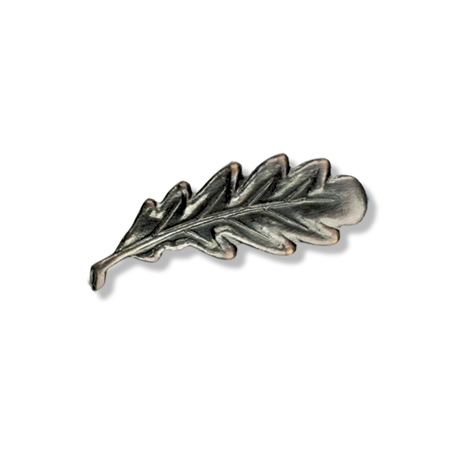
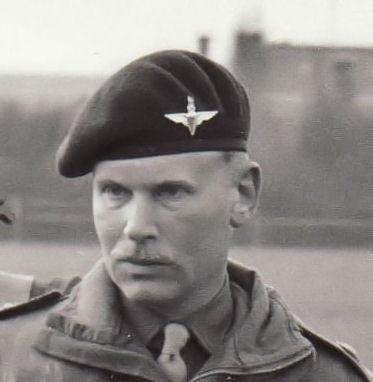
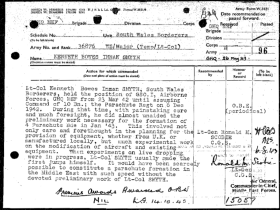
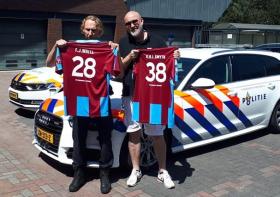
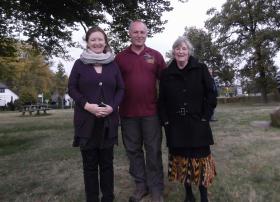
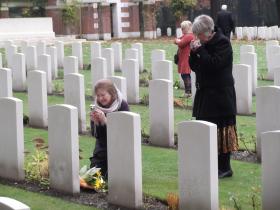
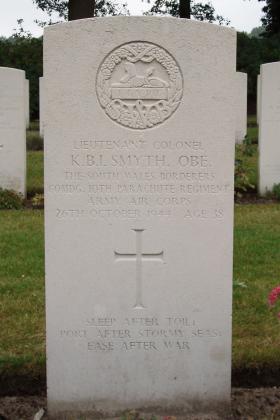
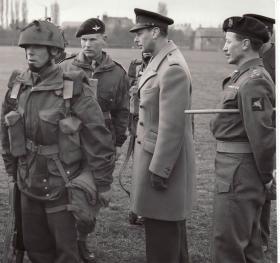
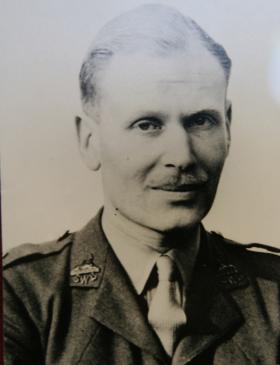
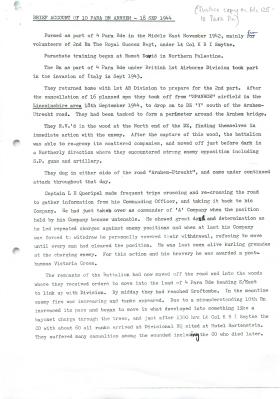
Latest Comments
There are currently no comments for this content.
Add Comment
In order to add comments you must be registered with ParaData.
If you are currently a ParaData member please login.
If you are not currently a ParaData member but wish to get involved please register.